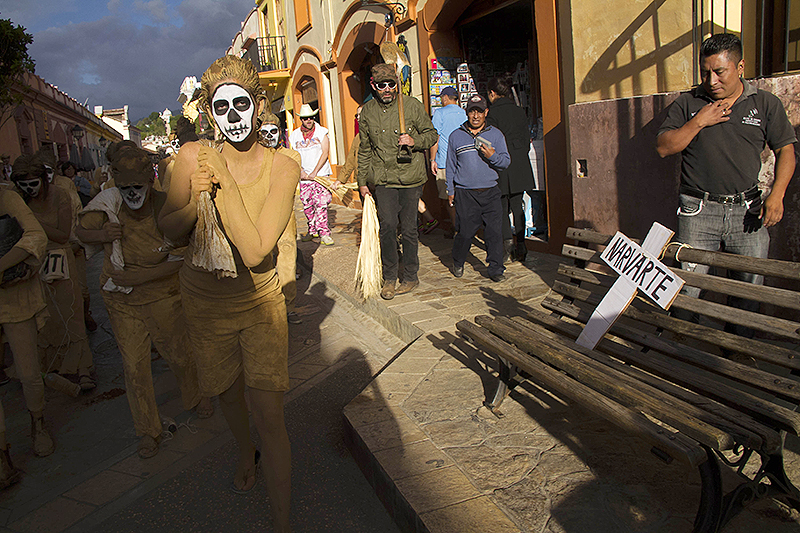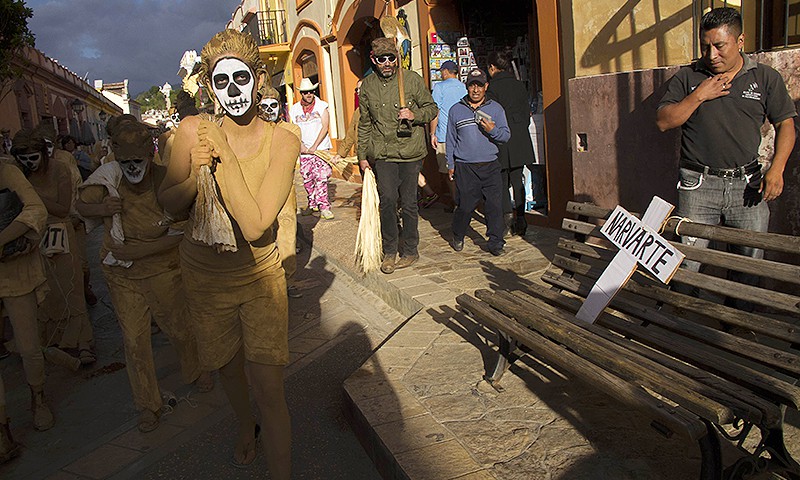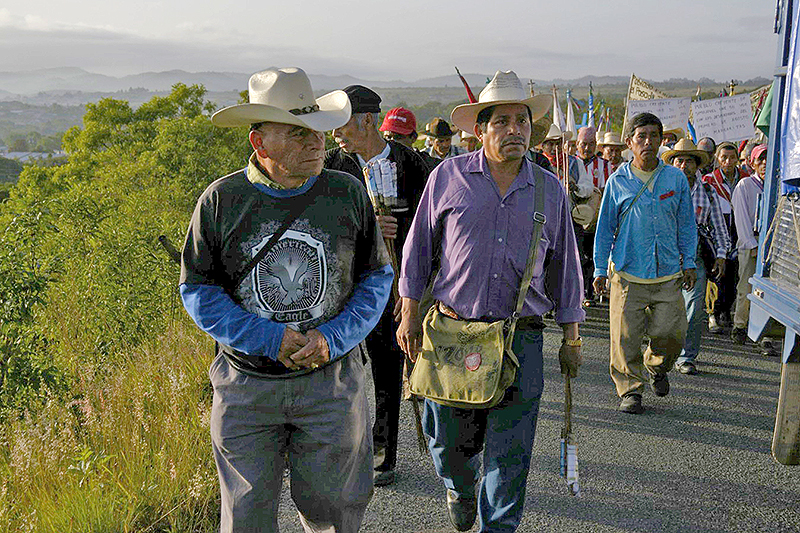SIPAZ : Celebrate by Sharing Knowledge
06/09/2015SIPAZ ACTIVITIES (From mid-May to mid-August 2015)
06/09/2015“We must imagine how a new society might be.
[…] There are many answers, many ways, many forms.
And each of us will see what we are able to do and learn from our own struggle and from other struggles
[…] There is not just one path.
There is not one kind of step.
Those who walk and struggle do not all do so the same way
There is not just one who walks”.
EZLN, January 1st, 2015, Caracol II of Oventik
Throughout the history of Mexico, students and young people, indigenous peoples, campesinos, women, and everyone whose identities lie at the margins of society, have been challenged to demand and construct something new by resisting and overturning the repression, exploitation, dispossession, and discrimination that they are living. This kind of organization and movement does not have just one face. Executing and demanding justice takes many forms.
Walking

© Moysés Zúñiga Santiago
Like any other day in the ejido of Ignacio Zaragoza, the hot sun caused us to sweat and the much-longed for wind was missing. The morning of July 28th marked an historic day in the jungle-border region of Chiapas. The road from the communities in the mountains to the heart of the cities of Las Margaritas and Comitán de Domínguez had never felt the strength of the pilgrimage of the Believing People from the tojolab´al region. It had never felt the steps taken by the adolescents, men, women, and elders from different communities, united, to declare themselves in favor of life, peace, and justice, and against violence and dispossession. This road had never heard the voices from the most remote corners of the jungle. Nearly 5,000 hearts – tsotsiles, tseltales, tojolabales, and mestizos – united to journey ts´omanotik (together) nine days after the state elections in Chiapas. The pilgrimage was saying this: the struggle does not stop with elections. Through their footsteps and their words, they declared themselves against “all projects of death and destruction” like hydroelectric dams and the highway from San Cristóbal to Palenque. They also demanded the immediate return of the forcibly and violently displaced families of Banavil, municipality of Tenejapa and of the Poblado Primero de Agosto, municipality of Las Margartias; a stop to the threats against Father Marcelo, pastor of Simojovel; respect for the autonomy of the Civil Society Las Abejas de Acteal; the return alive of the 43 missing students of Ayotzinapa; a stop to the repression of the Nahua pueblo of Santa María Ostula, and the aggressions and repression against the Zapatista peoples and all resistance movements that fight and struggle for the truth and for life.
The next day, even before the sun had come out to greet us, the songs, the chants, and the resistance of the peoples continued in route to Comitán. In their pronouncement, the Believing People, the pastoral team, deacons and coordinators of the Tojolab´al Mission, the Guadalupe Mission, and the parish of Santa Margarita invited “all persons and peoples of our region, to reflect on the reality we see, to continue defining ourselves, that this gathering of the peoples be only the beginning of our transformation of consciousness, to continue uniting with all our differences, constructing peace and hope from our steps and paths and our identities as indigenous and non-indigenous peoples, fighting for life, always in defense of our right to be peoples who are self-sufficient and valuable in and of ourselves.”
Illuminating
We see much more than pilgrimages, marches, and sit-ins. With the artwork of “It´s not enough to simply turn to see”, the Collective Nahualt, from Tuxtla Gutiérrez organized themselves. For four days they painted the faces of women who were victims of feminicides in Chiapas and Mexico. The women’s faces were painted onto the streets in order to invite citizens to take action against violence against women. The women remembered were Nadia Vera, an activist from Chiapas murdered with three other women and a photographer in the Mexico City not long ago; Kimberly Albores, who died in a daycare center of the Ministry of Social Development (Sedesol) from Tuxtla last year; and Tatiana Trujillo, who was murdered by her partner, Elmar Darinel Díaz Solorzano, an ex-federal representative. Daniel Castillo, one of the artists who participated in the mural said they are “conscious that it is not enough to go out and march, it´s not enough to post nonconformist statements on Facebook, it´s not enough to simply turn and look at the mural we painted. We know all these actions compel the spectators to think and ask themselves, ´What is happening here?´ We think that we have to disseminate these events and make our society see what is happening.”
Planting
A street-theater planting. It was to denounce the Chiapas Southern Border Plan, a program released in July of 2014 to supposedly protect Central American migrants. Instead it has made them more vulnerable. 40 students from New York University (NYU), led by Mexican actress Jesusa Rodríguez, brought a street-theater performance to the center of San Cristóbal de Las Casas. The actors were dressed in brown, their faces painted like skulls, and each carried a sack of dirt. They were there to denounce the human rights violations against Central American migrants traversing Mexico on their way to the United States. On the cathedral square, with their bodies and the sacks of soil they carried, they formed a map of Mexico. They showed all of Mexico as one mass grave.
Then they planted a small tree, which they also had brought, in a flower box in front of the cathedral. They showed that there are “many kinds of resistance struggles, that´s why we brought this tree of hope to plant. We ask those who live here to care for it, water it every once in a while to keep hope alive. It´s a symbol for the migrants, for the murdered women, the violated children, the abused elders. Let it remain here as a symbol of all the struggles in the country”.
In every corner of Chiapas, from the mountains of the highlands, to the deepest depths of the jungle and throughout the border regions, you will encounter small lights, questioning the problems they face, putting them in their proper perspective. They are always searching out each other, so that they might walk together and organize more ways to struggle for a new society.


